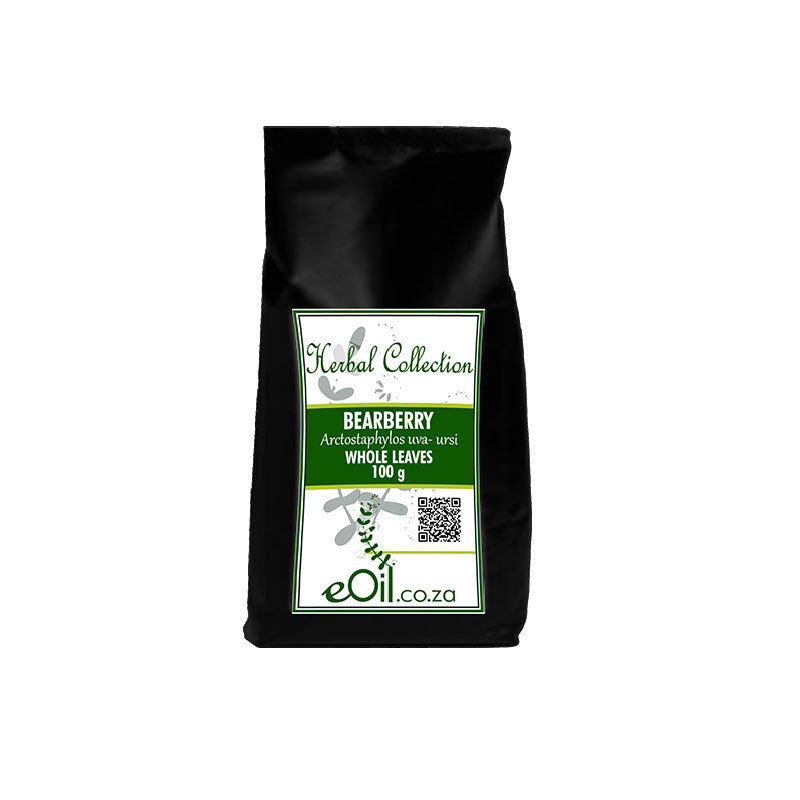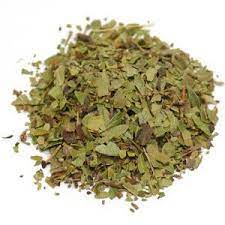Bearberry Leaves - Herbal Collection
Bearberry Leaves - Herbal Collection - 100 GR is backordered and will ship as soon as it is back in stock.
Description
Description
Brew the ultimate traditional remedy for bladder health.
Our premium Dried Bearberry Leaves (Arctostaphylos uva-ursi) are the raw, natural form of this powerful "bladder guardian."
Known as Uva Ursi, these leaves have been steeped for centuries to create a potent medicinal tea. They are naturally rich in Arbutin (for skin) and hydroquinone derivatives (for the bladder), making this a versatile herb for both internal wellness and DIY skincare.
Key Benefits & Uses:
Traditional UTI Tea: This is its #1 use. A strong tea made from these leaves is a powerful urinary antiseptic and astringent. It is traditionally drunk to help flush the kidneys, soothe the bladder, and fight the bacteria associated with cystitis and UTIs.
DIY Skin Brightening Toner: Bearberry is nature's source of Arbutin, a famous skin brightener. You can steep these leaves to create a potent homemade facial toner or wash that helps to fade pigmentation and dark spots naturally.
Astringent "Drying" Wash: The high tannin content makes the tea a strong astringent, excellent for using as a wash on weeping skin conditions or excess oil.
How to Use (DIY):
Medicinal Tea: These leaves are tough. Simmer 1 tablespoon in 2 cups of water for 15-20 minutes (do not just steep). Strain and drink. Note: The taste is bitter and astringent; you may want to mix it with Mint or Licorice.
DIY Toner: Brew a strong infusion, let it cool, and apply to the skin with a cotton pad. Keep refrigerated and use within 3 days.
Important Cautions:
Short-Term Use Only (7-10 days).
Do NOT use if pregnant.
Requires alkaline urine to work best (avoid acidic foods like cranberry while using).
INFORMATION
Bearberry (Uva ursi)
Scientific Name: Arctostaphylos uva-ursi
Common Names: Bearberry, Kinnikinnick, Uva ursi
INCI Name: Arctostaphylos Uva Ursi Leaf Extract
CAS Number: 84776-10-3
EC Number: 283-934-3Bearberry is an evergreen shrub native to North America, Europe, and Asia. Its leaves have been used medicinally for centuries, particularly for urinary tract health.
Traditional Uses
Bearberry has been traditionally used to:
- Treat urinary tract infections (UTIs)
- Reduce bladder inflammation
- Support kidney health
- Alleviate mild urinary incontinence
Active Compounds
The primary active compounds in bearberry leaves include:
- Arbutin (hydroquinone glycoside)
- Tannins
- Flavonoids
- Terpenoids
Available Forms
Tincture
A concentrated liquid extract made by steeping bearberry leaves in alcohol.
Suggested Use: Take 2-4 ml (40-80 drops) of tincture diluted in water, 3 times daily.
Tisane (Herbal Tea)
Made from dried bearberry leaves.Preparation: Steep 1-2 teaspoons of dried leaves in 8 oz of hot water for 10-15 minutes. Strain before drinking.Suggested Use: Drink 1-3 cups daily.
Herbal Capsules
Contain powdered bearberry leaf.
Suggested Use: Take 400-800 mg, 2-3 times daily.
Precautions and Contraindications
- Do not use for more than 7 consecutive days without medical supervision
- Avoid during pregnancy and breastfeeding
- Not recommended for children under 12 years old
- May interact with certain medications, including diuretics and corticosteroids
- Discontinue use if you experience nausea, vomiting, or abdominal pain
Safety Considerations
While bearberry has been used traditionally for urinary health, it's important to note that it contains hydroquinone, which may be toxic in large doses or with prolonged use
Always consult with a qualified healthcare practitioner before using bearberry, especially if you have existing health conditions or are taking medications.
CAUTION
Store in a cool, dry place, away from light. Keep tightly closed, away from the reach of Children and pets.
Do not exceed the daily dose.
This product is not intended to prevent or cure any form of illness or disease.
If you are pregnant or nursing ; If you have a medical condition or are in the course of medical treatment ; If you are programmed for theater/operation in the near future, please consult your healthcare practitioner before using this product.
This product cannot replace a varied and balanced diet and a healthy lifestyle.
This product has not been evaluated by the SAHPRA for its quality, safety or intended use.
For More Information please check our General Safety Herbal products Page

Bearberry Leaves - Herbal Collection - 100 GR is backordered and will ship as soon as it is back in stock.






